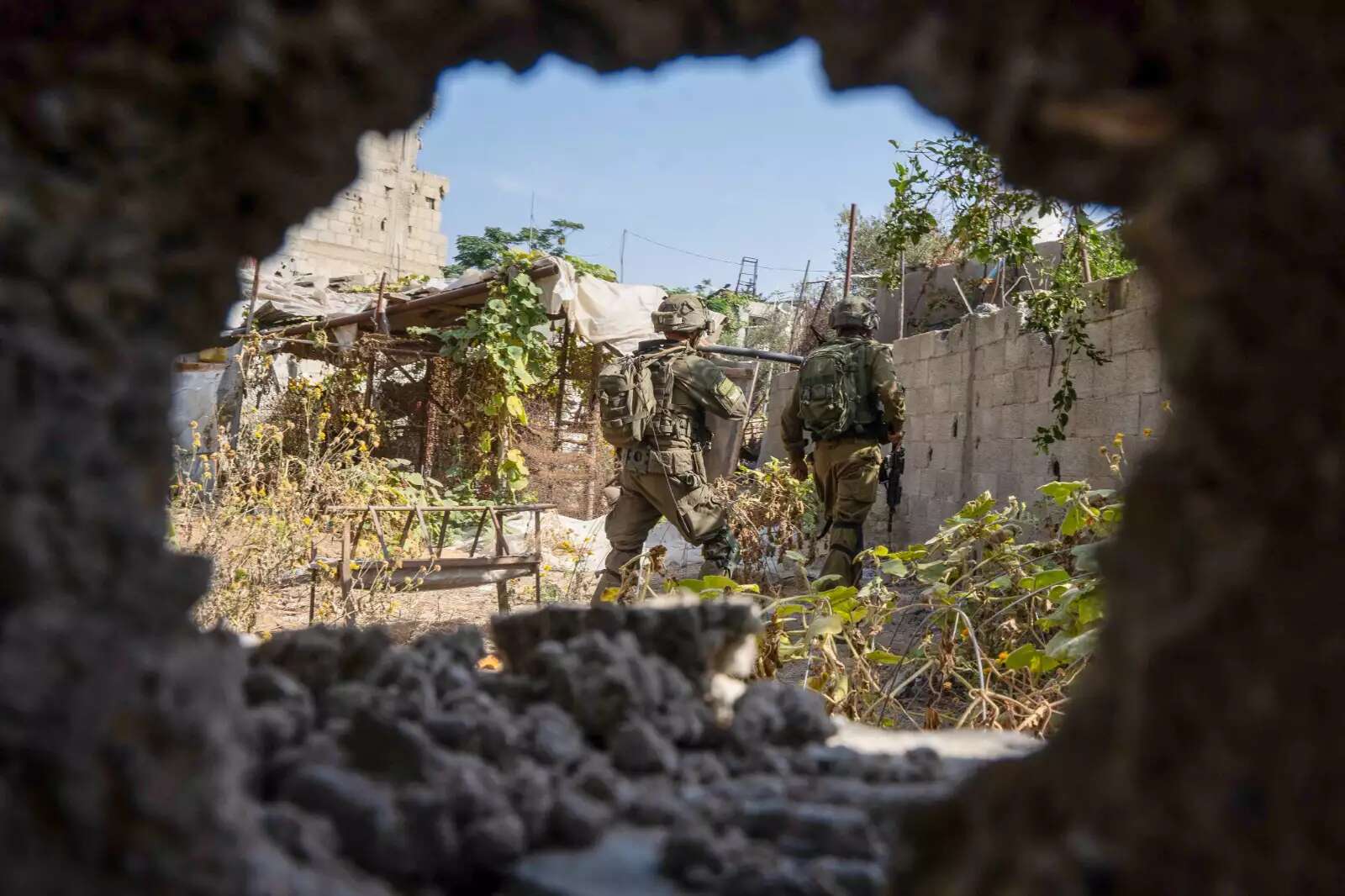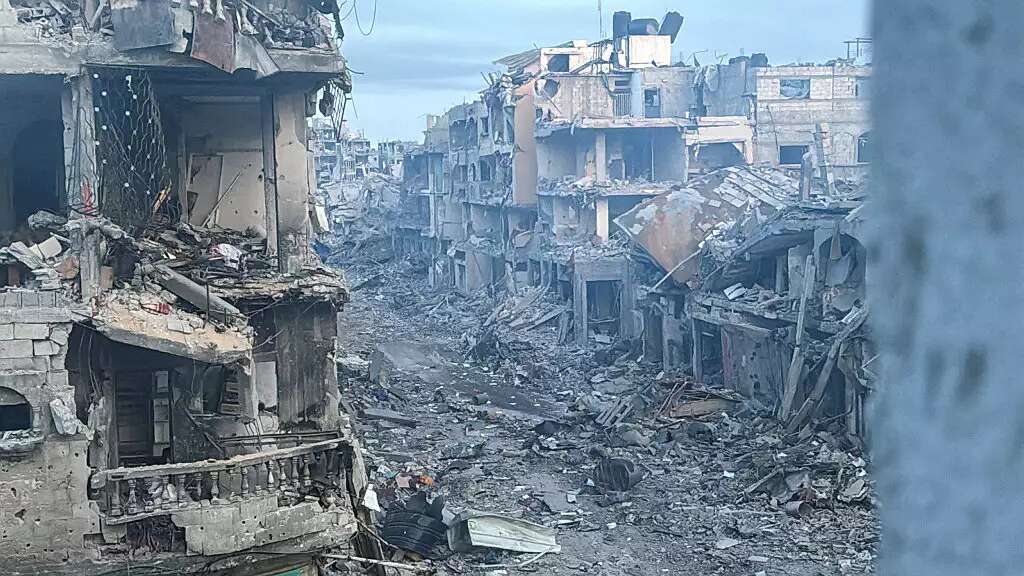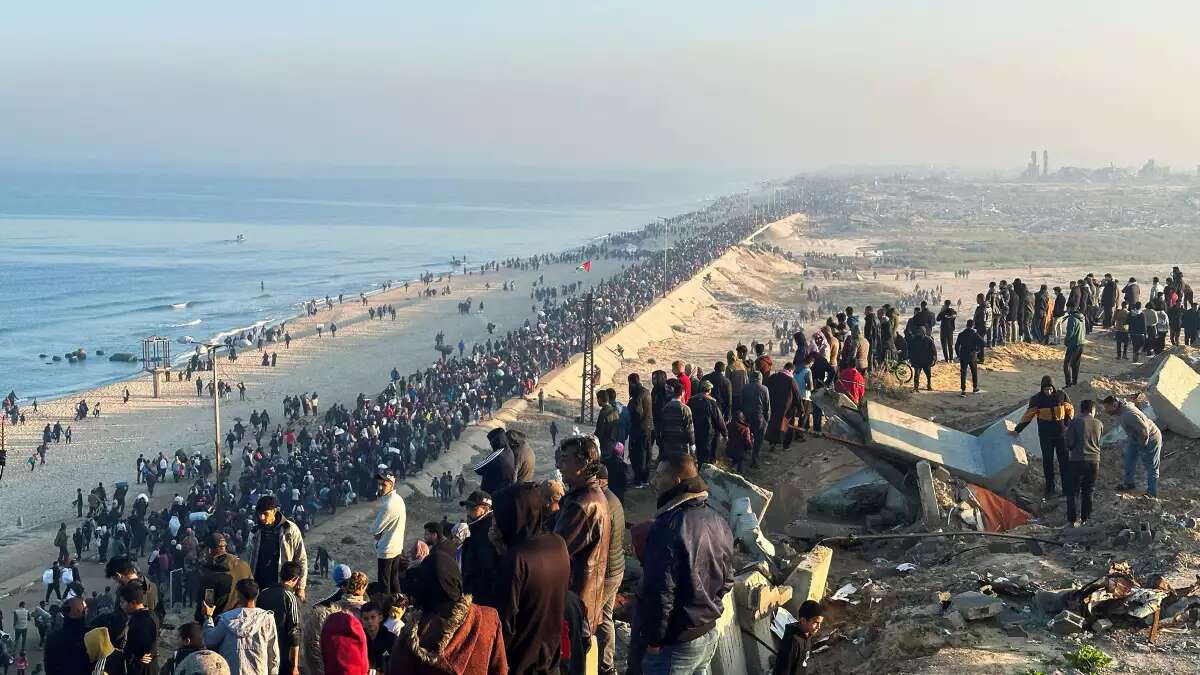Hamas' show of strength demands explanation
The images emerging from the devastated Gaza Strip do not depict Hamas as a collapsed, crushed, or dismantled organization, let alone a destroyed one. The victory images we had hoped to see will have to be found elsewhere.
Zvika Haimovich
Israel Hayom
Feb 1, 2025

Hamas and Islamic Jihad gunmen in Khan Yunis, where released Israeli hostages were ushered through a mob of howling and hostile Gazans.
The initial phase of the hostage release framework is underway after fifteen months of war, relentless IDF firepower, and a sustained military campaign in the Gaza Strip.
For months, senior IDF officials and government leaders have assured the public that Hamas had been dismantled as a military force, that it had lost most of its capabilities, and that its grip on local public opinion was waning.
Over the past few months, Israel applied significant pressure on Gaza by closing the Rafah border crossing, asserting control over the Philadelphi Corridor, and slicing the Strip in half along the Netzarim Axis while preventing residents from returning to northern Gaza. However, two of these pressure levers were removed this week.

The hostage release deal is necessary. If anything, it should have been implemented earlier. Yet, in the past two weeks, as Israel refrains from making decisions regarding "the day after" Hamas in Gaza, the reality on the ground shows a terrorist organization that remains the Strip's sole ruler. Hamas is exploiting each hostage release phase to stage a theatrical display of governance and reinforce its control. Its ability to organize and maintain outward symbols - uniforms, equipped vehicles, staged photography, flags, police presence, and more - alongside military displays of armed fighters and vehicles, is far from what one would expect from a group that has been crushed and stripped of its capabilities.
How, after all the IDF's bombardments and military pressure, when Gaza is completely isolated from the outside world, is Hamas still able to mobilize forces and equipment in such an organized manner, both in scale and in condition, within days? This is difficult to comprehend, and it demands an explanation from IDF commanders, something we have yet to hear. This is an organization that was supposedly stripped of its command structure and assets, yet it still manages to project strength. The victory image we sought in this war against Hamas in Gaza appears elusive. Hamas remains standing, and as time passes and the hostage release process continues, its grip and control over the Strip only tighten.

Hamas has not been defeated despite the destruction of Gaza.
Hamas, which has proven to be a tough negotiator in the hostage release talks, has adeptly leveraged the situation to its advantage. Its insistence on a phased release plan spread over 42 days, combined with the removal of Israeli pressure levers, such as reopening the Rafah crossing and lifting the territorial division at the Netzarim Axis, was likely a strategic move aimed at reasserting its control. By facilitating the return of hundreds of thousands of Gazans to northern Gaza without basic living conditions, Hamas is effectively using them as human shields, making it far more difficult for the IDF to resume military operations in the north, or anywhere else in the Strip.

Tens of thousands of Gazans head to northern Gaza.
Israel's attempt to impose conditions on future hostage release phases is, in essence, an effort to "cut losses." While it is being framed as a necessary step to remove the physical threat to hostages from an uncontrolled, frenzied crowd - a justified move - it is also an attempt to deny Hamas the "victory displays" that serve its internal propaganda goals, and one day, could be used against Israel as well.
Even when the second phase of the hostage release is completed, and all captives return home, it will not be a victory image. The release is a moral obligation and a national necessity, one that stems from one of the greatest failures in Israel's history. We must not delude ourselves. It is crucial to remember the cost, the time that has passed, and those who could have returned alive but never will.
As a nation and a society, we seek moments of optimism, joy, excitement, and the affirmation of life. But let us not be mistaken, these emotions will not erase the horrors of October 7, 2023. And to those who assured us that "we have defeated Hamas" (as Defense Minister Katz claimed upon taking office) or that "Hamas has been dismantled, along with its battalions and capabilities" (as the IDF Chief of Staff declared), I hope the images from Gaza are prompting a reassessment. They should be asking themselves: Where did we go wrong? More importantly, where do we go from here? What reality will remain in Gaza on the day we bring the last hostage home? Hamas' PR displays and military parades leave much to ponder.
1 comment:
It is hard to defeat people who do not recognize that they have lost. Sometimes you just plain have to kill them all.
Post a Comment